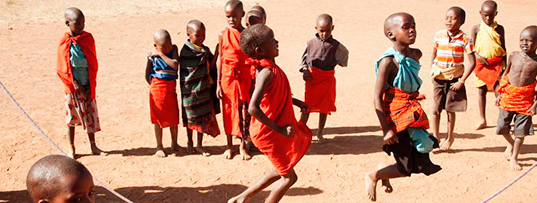While progress has been made in support of the Sustainability Development goals (SDG’s), gaps ensue mitigating climate change’s disruptions on people’s live, migratory patterns and getting out of poverty.
Earth’s climate is going through unprecedented changes in the history of modern civilization as a result of human behaviors. Without adaptation and mitigation strategies, substantial damages to the U.S. economy, environment, human health and well-being will continue to increase over the coming decades. These include increasing greenhouse gas emissions, higher temperature extremes, heavy precipitation, flooding and wildfires. This is influencing the movement of humans, marine and wildlife species to find better places to live and survive in and outside of cities.
By 2050 there will be 9.7 billion people on the planet, half of them will be in water-stressed regions, requiring 50 percent more energy.
While the CSR movement has raised the bar for companies to have ethical brands, products and services, considerable investments and collaboration across multiple industries, supply chains will be required for transformative change and disruption, transitioning to the corporate social innovation movement.
A recap of the realities we face:
Climate Change: Extreme weather events, reduction in worker productivity could cause major global economic losses unless greenhouse gas emissions are significantly reduced in the next few decades, according to a series of reports from the United Nations and global financial institutions and revealing that climate change signifies economic risk. In the U.S. alone, if greenhouse gas emissions are not significantly reduced the country could see a 10 percent cut in real income by 2100.
STEM Education: Women are still considered a minority in the fields related to science and technology, both in education and professions. According to the UNESCO report Cracking the Code, only 35% of all students in STEM higher education around the world are women. According to Girls Who Code, less than 20 percent of computer science graduates are women. Today, only 24 percent of computer scientists are women, and by 2027, just 22 percent of women will be represented in the field.
Oceans: Nearly half of the ocean’s marine populations have declined over the last 45 years. About 13 million tones of plastic leak into our oceans every year, harming biodiversity, economies and health. By 2050, there will be more plastic than fish if we keep producing (and failing to properly dispose of) plastics at predicted rates, plastics in the ocean will outweigh fish pound for pound in 2050, according to a report by theEllen MacArthur Foundationand World Economic Forum.
Wildlife Species: In just 20 years African elephants could be gone. Despite the ivory ban in 1989, elephants continue to be slaughtered with only half the number of elephants left. Approximately 100 African elephants are killed each day by poachers seeking ivory leaving 430,000 remaining. Elephants are a critical species as they create and maintain the ecosystems in which they live and for other plant and animal species to also survive.
Women and Girls: Gender inequality is a major cause and effect of hunger and poverty: it is estimated that 60 percent of chronically hungry people are women and girls (Source: WFP Gender Policy and Strategy). Women make up more than two-thirds of the world's 796 million illiterate people.
Reputation Dynamics: Predictions for 2020:
Impact Investing: Recent growth in impact investing has come from a surge in interest from millennials — investors born between the mid 1980s and the early 2000s. The impact investing industry is estimated at USD 502 billion as of 2018. The growing impact investment market provides capital to address the world’s most pressing challenges in sectors such as sustainable agriculture, renewable energy, conservation, microfinance, affordable basic needs including housing, healthcare, and education. Several of the world’s biggest money managers have entered impact investing, including UBS Wealth Management and Goldman Sachs Asset Management. Non-profits such as the Ford Foundation and the Michael & Susan Dell Foundation have also made commitments.
Empower Consumers: Nearly two-thirds (63%) of surveyed global consumers prefer to purchase products and services from companies that stand for a purpose that reflects their own values and beliefs, and will avoid companies that don't, according to new Accenture research shared with Marketing Dive. Among consumers, 62% want companies to take a stand on the social, cultural, environmental and political issues that they care about the most.
Mission-related Investments: U.S. foundations are leading the way in MRI following the announcement just last year by the Ford Foundation that it will commit USD 1 billion of its 12 billion endowments to MRIs over the next ten years; this is the largest commitment of philanthropic endowment to impact investing. The Foundation will be focusing on investments in affordable housing in the U.S. and access to financial services in emerging markets.
Reset the CSI Framework: This entails devising the long-term strategic goals, a greater emphasis on research and development, human development, proper selection and alignment with NGO/civil society partners, measurements and mission-related investments.
Gender-lens Investing: Gender lens, gender-focused investing is one of the fastest growing segments. Gender lens investing integrates gender-based factors into investment decisions with goals ranging from enhancing risk-adjusted returns to driving gender equality. The International Finance Corporation (IFC) estimates a $320 billion financing gap for female entrepreneurs in small and medium enterprises in developing countries alone. According to the World Economic Forum’smost recent Global Gender Gap Report, this trend could continue for years: at current rates of progress toward gender parity, the gender gap will close in 61 years in Western Europe, 70 years in South Asia, 171 years in East Asia and the Pacific and 165 years in North America
Conclusions: Mere checkbook philanthropy will not suffice
Bridging the gap between CSR and corporate social innovation will require a long-term sustainable approach. This entails enforcement throughout the organization, business units, supply chains, listening to and influencing customer behaviors including unlocking the power of human potential within the employee base. Businesses have the opportunity to leverage the diversity of their communities, philanthropic commitments and people they influence within their ecosystems.
In turn, authentic brand and marketing campaigns can educate, advocate and empower the public at large to be part of addressing our pressing social and environmental challenges on a more united front, lifting people out of poverty and improving livelihoods.
By: Samantha Taylor - Founder of Reputation Dynamics
Since 2005, Reputation Dynamics (RD) has committed to addressing social, environmental and human justice issues. RD mobilizes corporations, NGOs/civil society and academia to devise share-valued approaches and develop inclusive partnerships.
I look forward to connecting with peers who are making the world a better place, advancing the Sustainable Development Goals. Please contact me at:
sam@reputation-dynamics.com




















 As the ‘War for Talent’ continues, women are being increasingly recognized and actively participating in building stronger economies, more stable societies and achieving goals for economic development around the world.
Women perform 66 percent of the world’s work, and produce 50 percent of the food, yet earn only 10 percent of the income and own 1 percent of the property.
As the ‘War for Talent’ continues, women are being increasingly recognized and actively participating in building stronger economies, more stable societies and achieving goals for economic development around the world.
Women perform 66 percent of the world’s work, and produce 50 percent of the food, yet earn only 10 percent of the income and own 1 percent of the property. The recent Diversity Best Practices session, hosted by The New York Times, convened 300 corporate diversity and inclusion leaders followed by a joint report out with CEOs.
This interactive forum featured three core topics including implementing global gender strategies, developing innovative solutions for engaging people with disabilities, along with utilizing CSR as a vehicle for maximizing diversity and inclusion results. Corporations have significant opportunities to address some pressing issues and implications for conducting business in today’s marketplace including:
The recent Diversity Best Practices session, hosted by The New York Times, convened 300 corporate diversity and inclusion leaders followed by a joint report out with CEOs.
This interactive forum featured three core topics including implementing global gender strategies, developing innovative solutions for engaging people with disabilities, along with utilizing CSR as a vehicle for maximizing diversity and inclusion results. Corporations have significant opportunities to address some pressing issues and implications for conducting business in today’s marketplace including: Learn How to Sustain and Build Global Diversity and Inclusion Initiatives throughout Business. Hosted by the New York Times Company.
Learn How to Sustain and Build Global Diversity and Inclusion Initiatives throughout Business. Hosted by the New York Times Company.